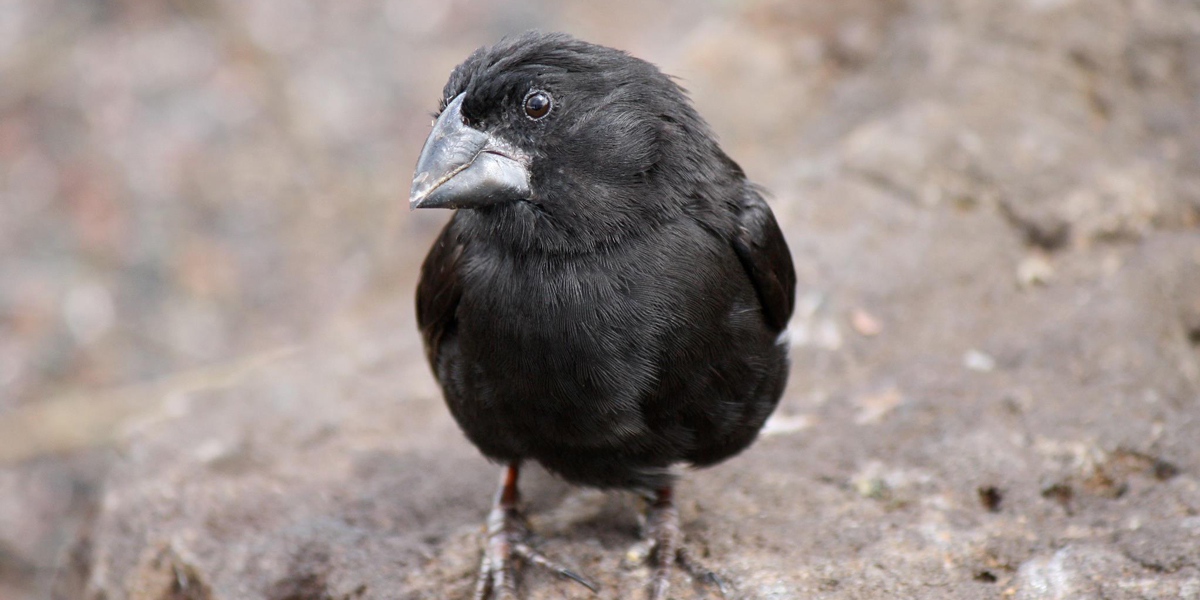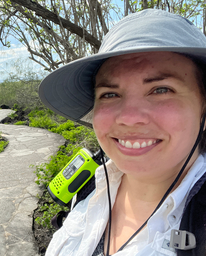
In 1835, Charles Darwin sailed to the Galápagos Islands, a volcanic archipelago straddling the equator. He subsequently wrote of the islands as “a little world within itself” and detailed a group of drab birds with beaks of graduated sizes. “One might really fancy that…one species had been taken and modified for different ends,” he noted. Years later, Darwin returned to these observations in On the Origin of Species, citing the birds as an example of evolution from a common ancestor.

Sarah Knutie (B.S. Ecology, Evolution, and Behavior, ‘06) knows these birds well. As an associate professor at the University of Connecticut, Knutie studies birds and their parasites, focusing extensively on the thirteen or so species collectively known as Darwin’s finches. Due to human activity on the Galápagos, the birds face novel threats, including an invasive nest parasite called the avian vampire fly. Knutie and her colleagues have found that nest infestations can cause 100 percent mortality among fledglings in some years.
Knutie has recently investigated how urbanization in the Galápagos affects the host-parasite relationship. Her team tracked small ground finches in urban and nonurban areas. The latter required miles of hiking over lava fields with ladders to observe nests high in tree-like cacti and thorny trees. “It’s the hardest fieldwork I’ve ever done,” Knutie says. During the three-month breeding season, daytime temperatures climb into the triple digits. Her team found that urban birds incorporate human debris into their nests. Still, urban birds fared better overall: they built more nests, laid more eggs, and reared more nestlings.
The team is currently exploring the role of temperature in this dynamic. Urban nests are cooler than their nonurban counterparts because the birds build them in ornamental trees, buildings, and other protected locations. Darwin’s finches are no strangers to heat, having evolved and diversified on the archipelago over the past two million years; yet, when faced with new pressures like the avian vampire fly, the birds may be too stressed to cope. To test this hypothesis, the researchers conducted an experiment involving shade cloths covering a portion of the nonurban nest during the most recent breeding season.
“Temperature is becoming a centerpiece of the lab’s research,” Knutie says, noting her longstanding work with eastern bluebirds and tree swallows around the University of Minnesota’s Itasca Biological Station and Laboratories. She first came to Itasca for undergraduate summer courses in 2004, an experience that revealed the thrill of field biology and inspired her career trajectory. Since 2014, she has continually expanded a set of nest boxes there. For a recent publication, her team manipulated nest-box temperature by inserting heat packs beneath the nests, revealing that elevated temperature caused meaningful differences in how the bird species responded to nest parasites. More recently, Knutie received funding from the National Science Foundation to expand this temperature research across the bluebird’s range in the eastern United States.
Meanwhile, in the Galápagos, her team carries on beneath the searing equatorial sun, knowing the implications are profound. Many of Darwin’s finches are threatened with extinction, some critically. One species has dwindled to fewer than one hundred individuals. Knutie’s work has already touched on conservation and promises to continue informing efforts to save what Darwin called “a most singular group.”
— Jonathan Damery